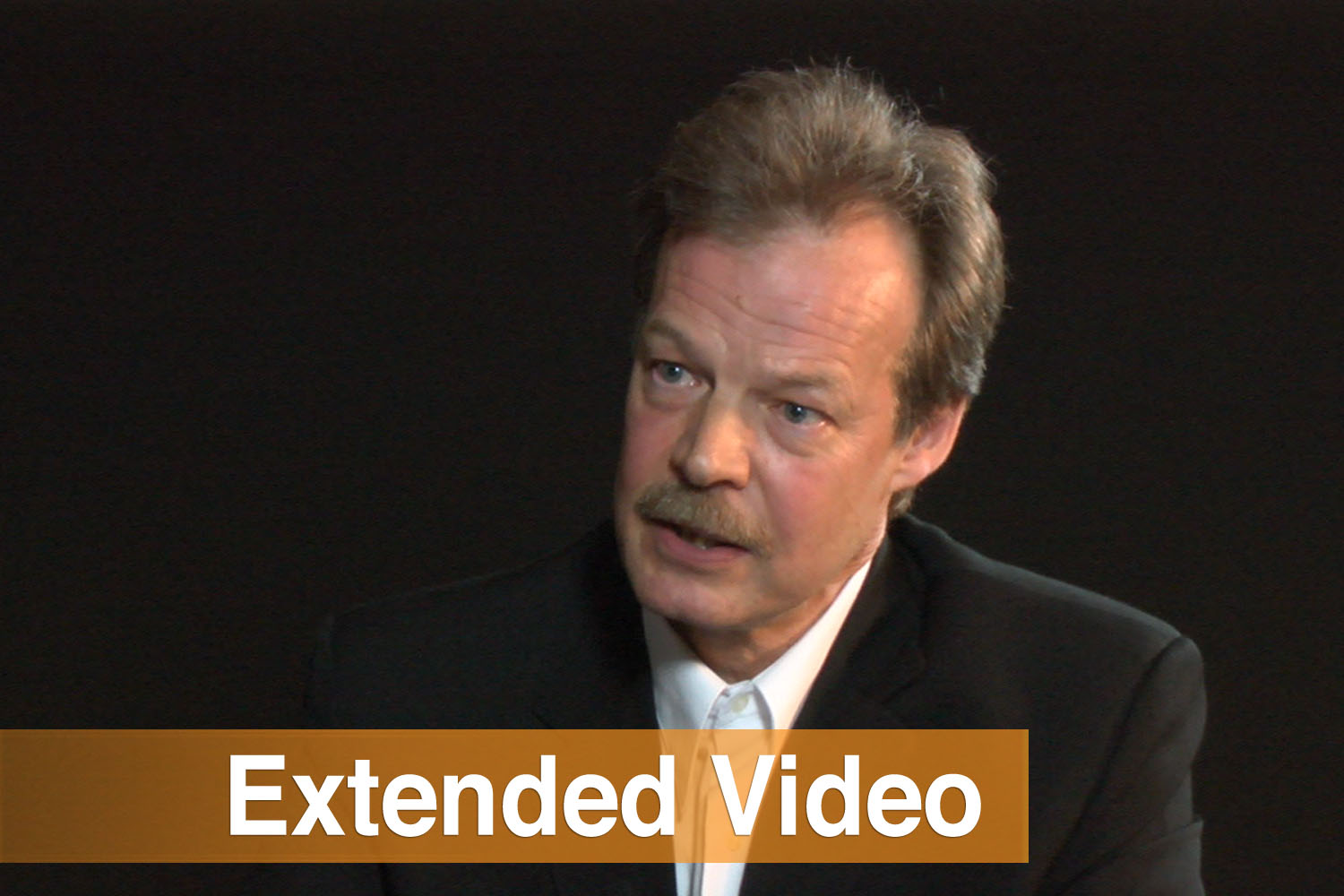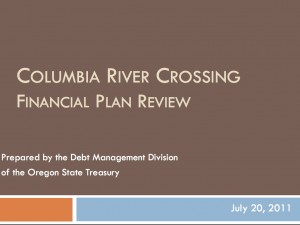Overestimated toll revenue projections. Outdated traffic data. Pie in the sky funding assumptions. Those elements – along with the unpalatable news that Washington State will be completely responsible for toll collection and bridge maintenance – are contained in a financial plan review of the Columbia River Crossing Light Rail project.
The review, prepared by the debt management division of the Oregon State Treasury, relies on some data now a decade old. “Key assumptions in the traffic and toll revenue forecast used in the 2008 draft environmental impact statement are now outdated, given the unanticipated depth of the recent recession,” the treasurer’s review says.
“Many toll roads around the world have not met their forecast revenues due to these unanticipated conditions,” the review adds. It points out that a traffic and toll revenue forecast was developed in 2005, but has been criticized by economists who say it doesn’t accurately predict traffic growth and toll revenue over time.
Erroneous assumptions
“By its very nature, this type of model assumes a steady growth rate in annual population, employment, traffic and GDP (gross domestic product),” the review says. “Cumulative impacts of relatively small differences in assumptions about traffic growth can have a significant impact on forecast revenues over the 30-year forecast horizon.”
In addition, changes in land use, employment patterns, and economic conditions “can have a profound impact on drifing patterns” and the resultant toll revenue generation.
The Oregon State Treasurer’s office hired two independent consulting firms to conduct desktop reviews of the Columbia River Crossing Light Rail project (CRC) forecasts from both the credit analysis and traffic engineering perspectives. On Friday COUV.COM reported on the findings of those consultants.
Both firms “noted that a far more robust modeling approach (i.e. the investment grade traffic and toll revenue study) will be required prior to the initial toll bond financing planned for FY 2015.” The consultants pointed out that Portland Metro’s 2002 long-term employment projections, which were relied upon for the 2008 draft environmental impact study, are very outdated.
“Traffic counts on the I-5 and I-205 bridges have not grown at the rates predicted in the 2008 draft environmental impact study,” the review says, and “both firms recommend that the CRC lower its baseline traffic and toll revenue forecasts in recognition of the unanticipated depth of the recent recession and the resulting impact on Portland metro’s long-term employment and traffic growth trends.”
Lessons from California
For example, in San Francisco an increasing number of Bay Area residents are leaving jobs in the city so they can avoid the daily toll. Many San Francisco employers have countered by paying commute costs for their workers, substantially upping the cost of doing business in the city. Marin County, to the north, and Oakland, to the east, are major bedroom communities that feed workers into San Francisco. To enter San Francisco from the north across the Golden Gate Bridge costs $6. To enter from the east across the Bay Bridge costs the same.
The response in Washington could be similar. Working in Portland may be less attractive when workers from Washington have to pay a daily toll to get there. Some will either take a different route or look for jobs – even if they’re lower paying – in their home state.
In addition, taxable retail sales have been historically low in Clark County since so many residents jump over to Portland to shop. With the advent of tolling, that will shift and Jantzen Beach and other Portland retailers will see less business coming from the north.
“For planning purposes, it was suggested that the CRC assume that projected annual gross toll revenues will be somewhere between 15 percent to 25 percent lower than the baseline forecast” assumed at the time the draft environmental impact study was adopted, the review says.
A 15 percent reduction in gross toll revenues cuts the total that can be generated through the sale of state-backed general obligation toll bonds by about $240 million compared to the CRC’s original financing plan. At a 25 percent toll revenue reduction, estimated proceeds are cut by about $407 million.
Clark County key to funding
CRC has estimated that pre-completion tolling on the bridge could bring in up to $200 million.
“Securing federal transit funding is now on the critical path,” the review says, with $850 million in New Starts grant being “key to moving ahead with the overall project as currently conceived,” and a vote on tax to generate $3 million in annual transit operating funds by Clark County residents “critical to getting the New Starts money.”
Assuming the CRC gets the federal funding it requests, Washington and Oregon will need to provide interim financing “to pay significant portions of the CRC’s construction costs,” the review says.
And although the two states are working together on funding the early stages of the CRC project*, once the bridge is built that relationship ends. “Toll collection, bridge ownership and ongoing maintenance will be done by the State of Washington,” the review points out.
To compile its review, the Oregon treasurer’s office worked with law firm Orrick Herrington & Sutcliffe as bond counsel, the Oregon Department of Justice and both Oregon and Washington’s department of transportation. Also involved in the review was a financial advisory firm and Citi/Morgan Stanley as underwriters.
* The well-documented cost to taxpayers, if the CRC stays on budget, is $10 billion. This was established by the Cortright Report (PDF) which used data from an independent review panel hired by the governors of Washington and Oregon. (View the panel’s final report.)
 See architect Kevin Peterson’s recent video where he talks about discrepancies in the CRC design and his conclusion that there’s a less expensive, more elegant solution:
See architect Kevin Peterson’s recent video where he talks about discrepancies in the CRC design and his conclusion that there’s a less expensive, more elegant solution:
World-renowned bridge architect notices error derailed CRC design
See our continuing coverage of the Columbia River Crossing Light Rail project.
Do you have information to share on the CRC? To respond anonymously call 260-816-1426. To allow your comments to be used on COUV.COM call 260-816-1429.











[...] of wrong data being used for future projections of the ability to pay for this boondoggle are also ignored and [...]